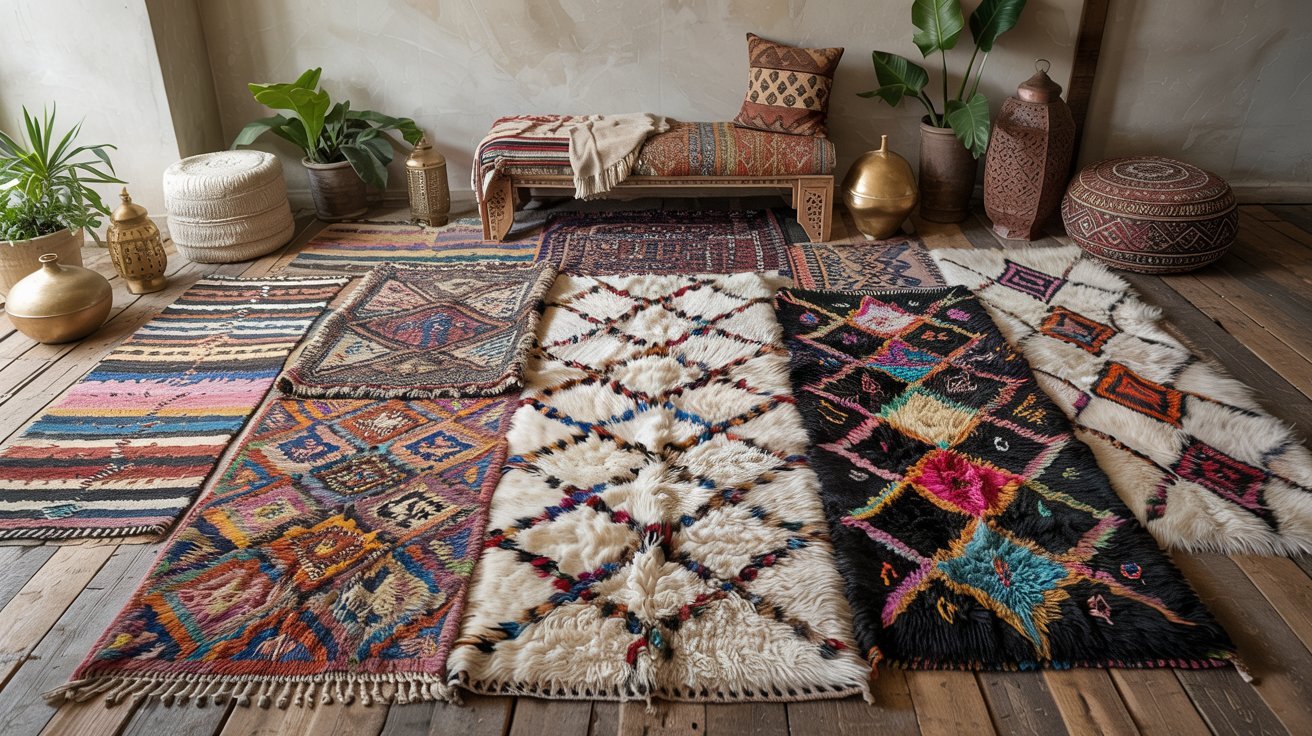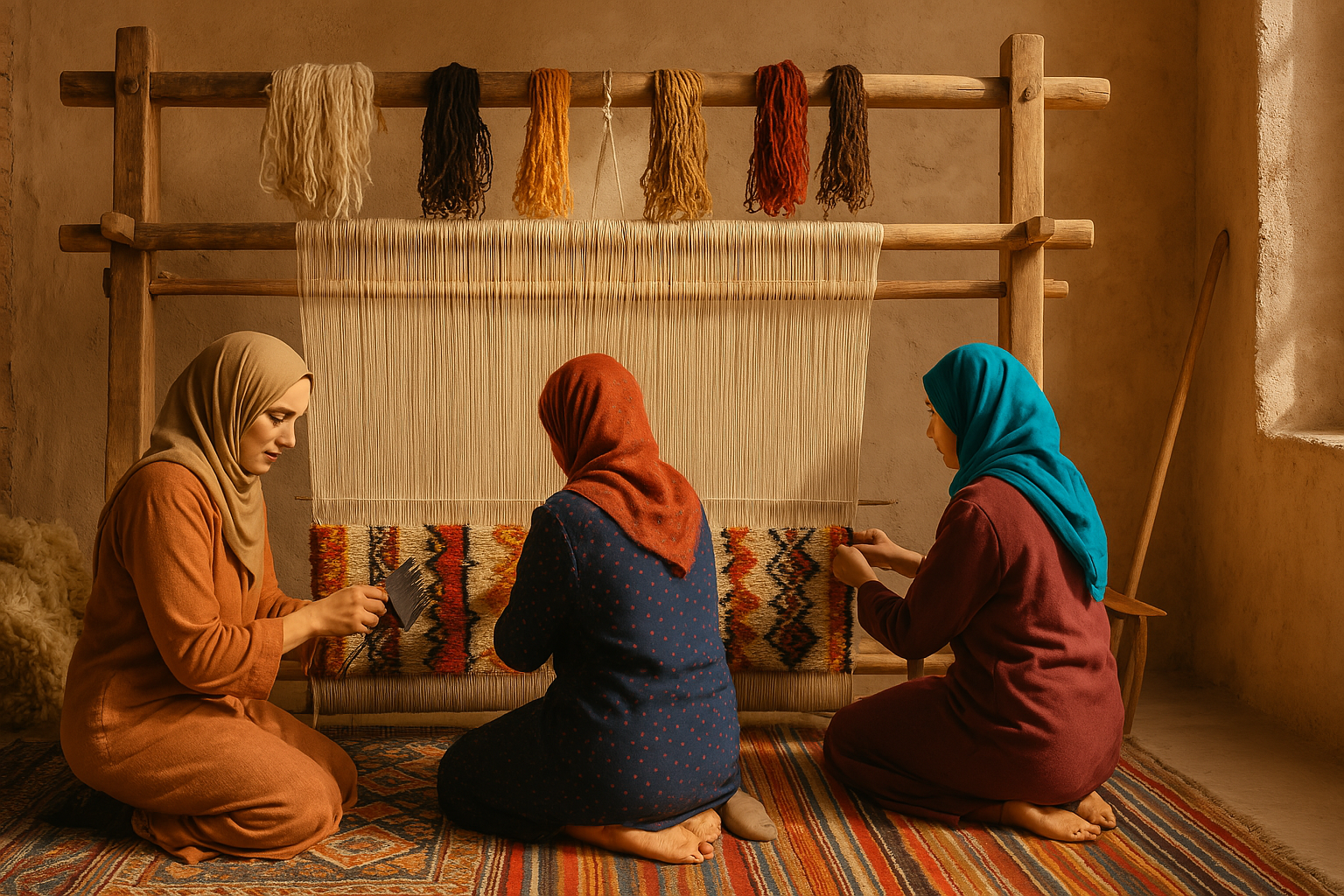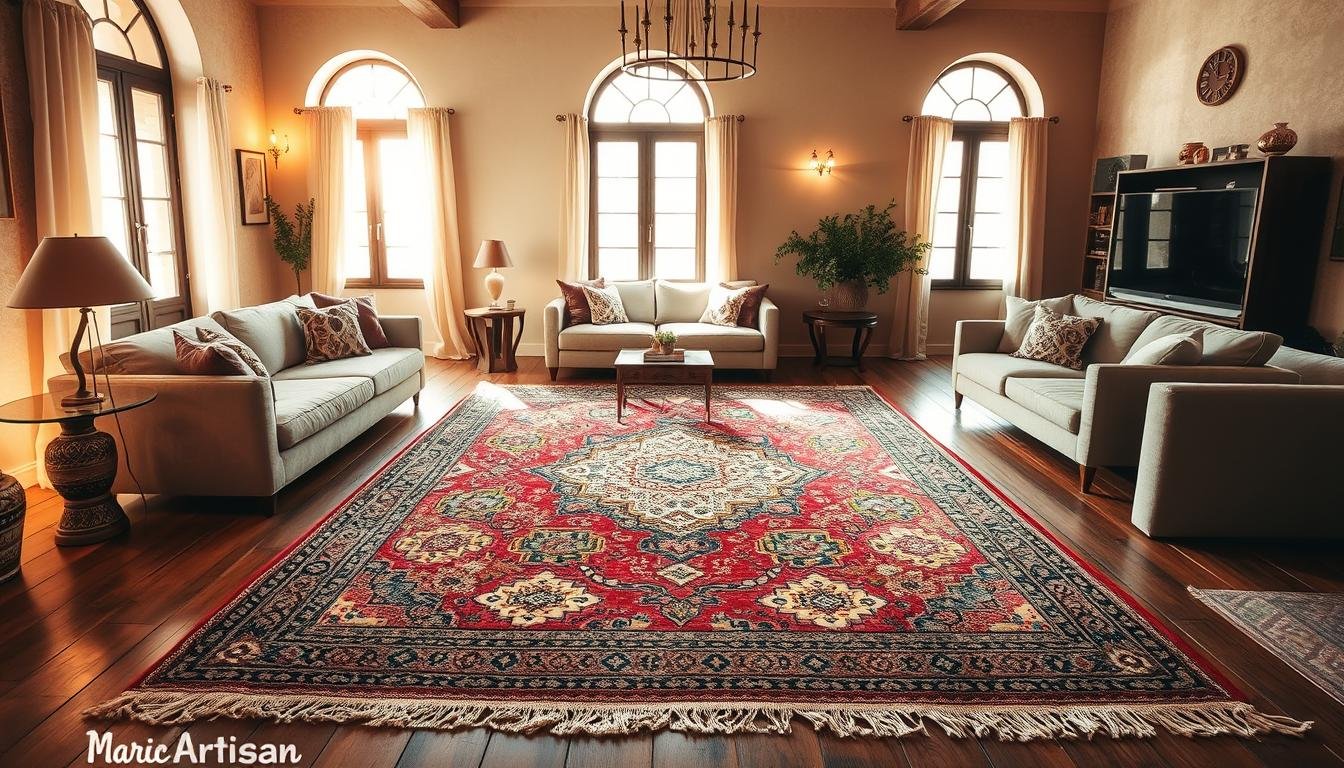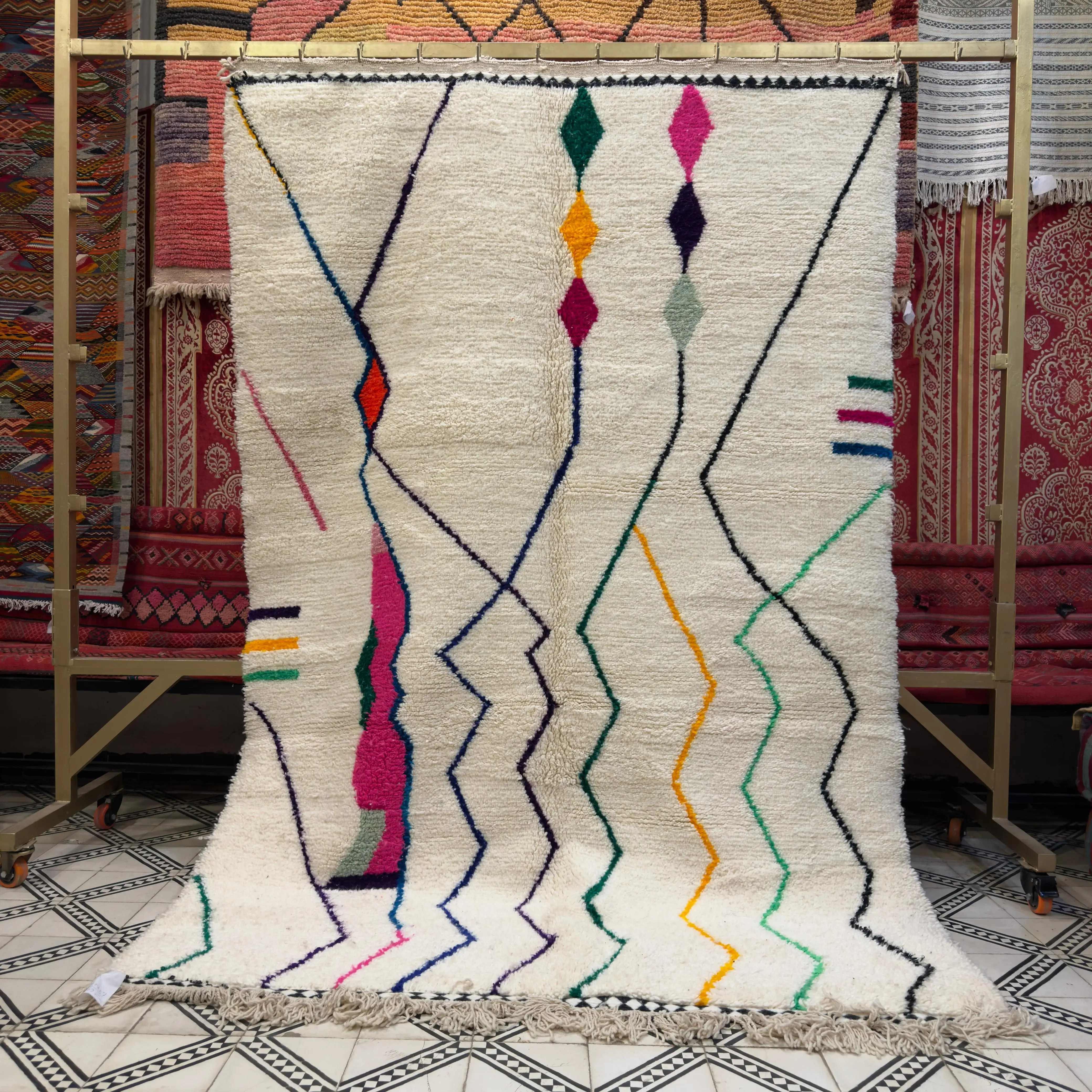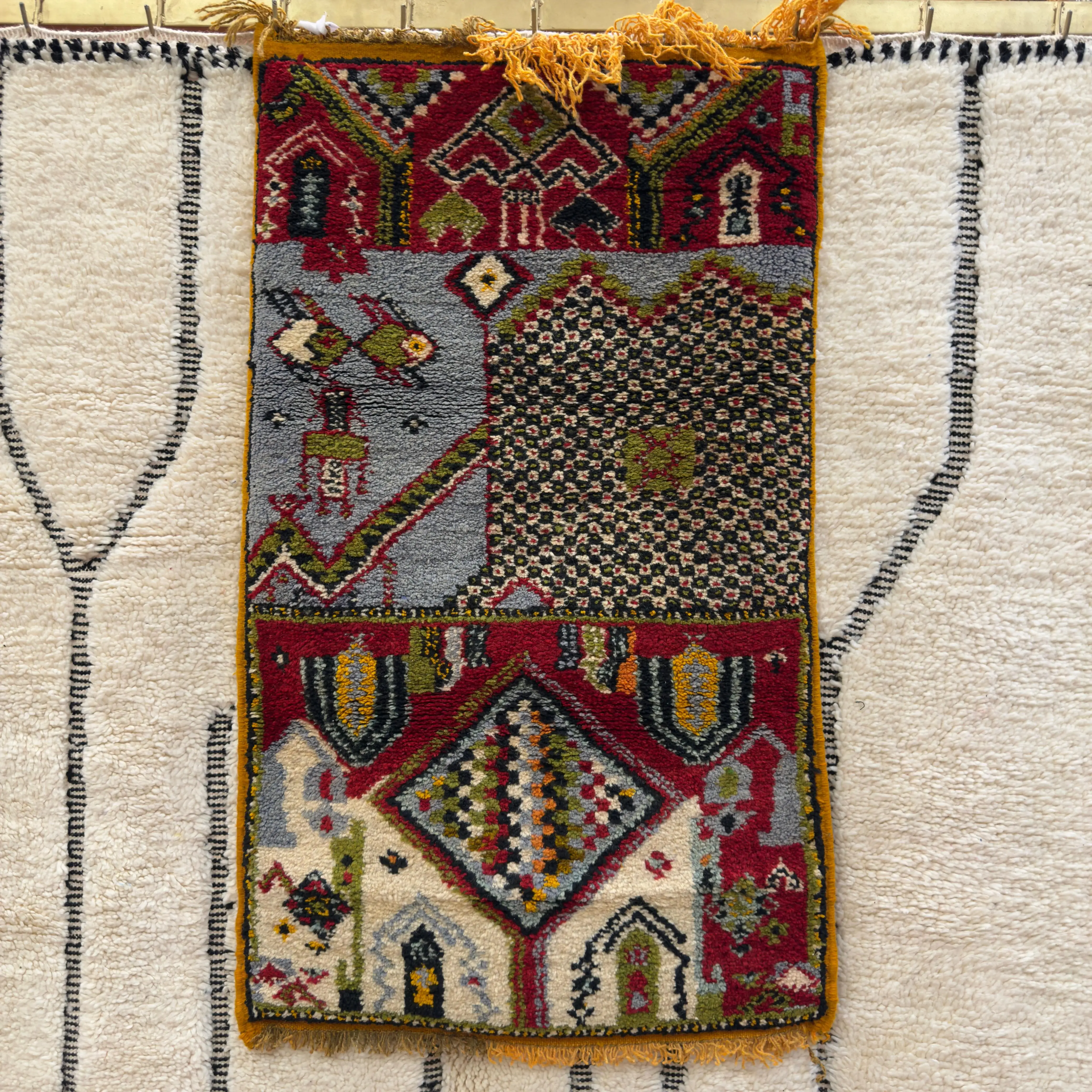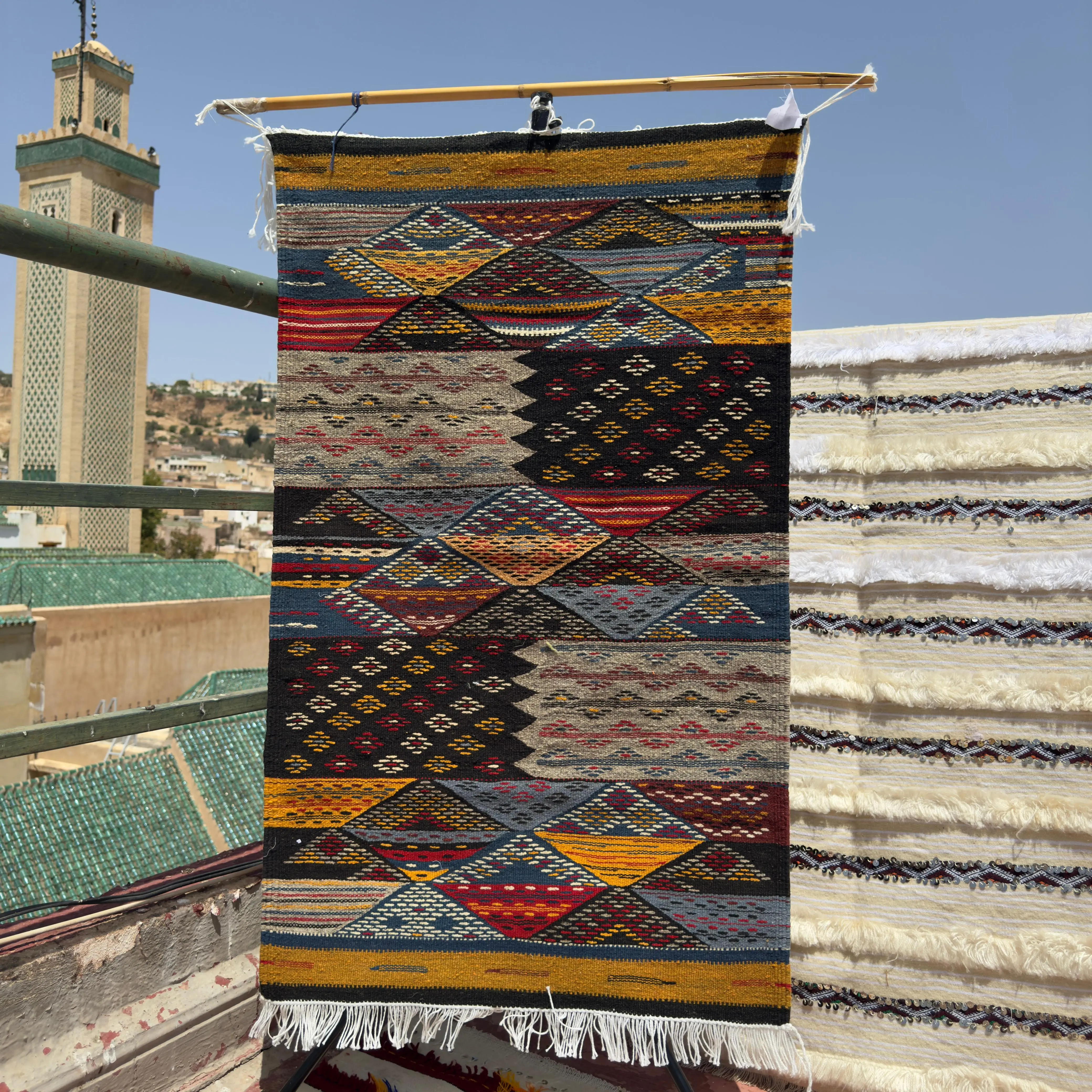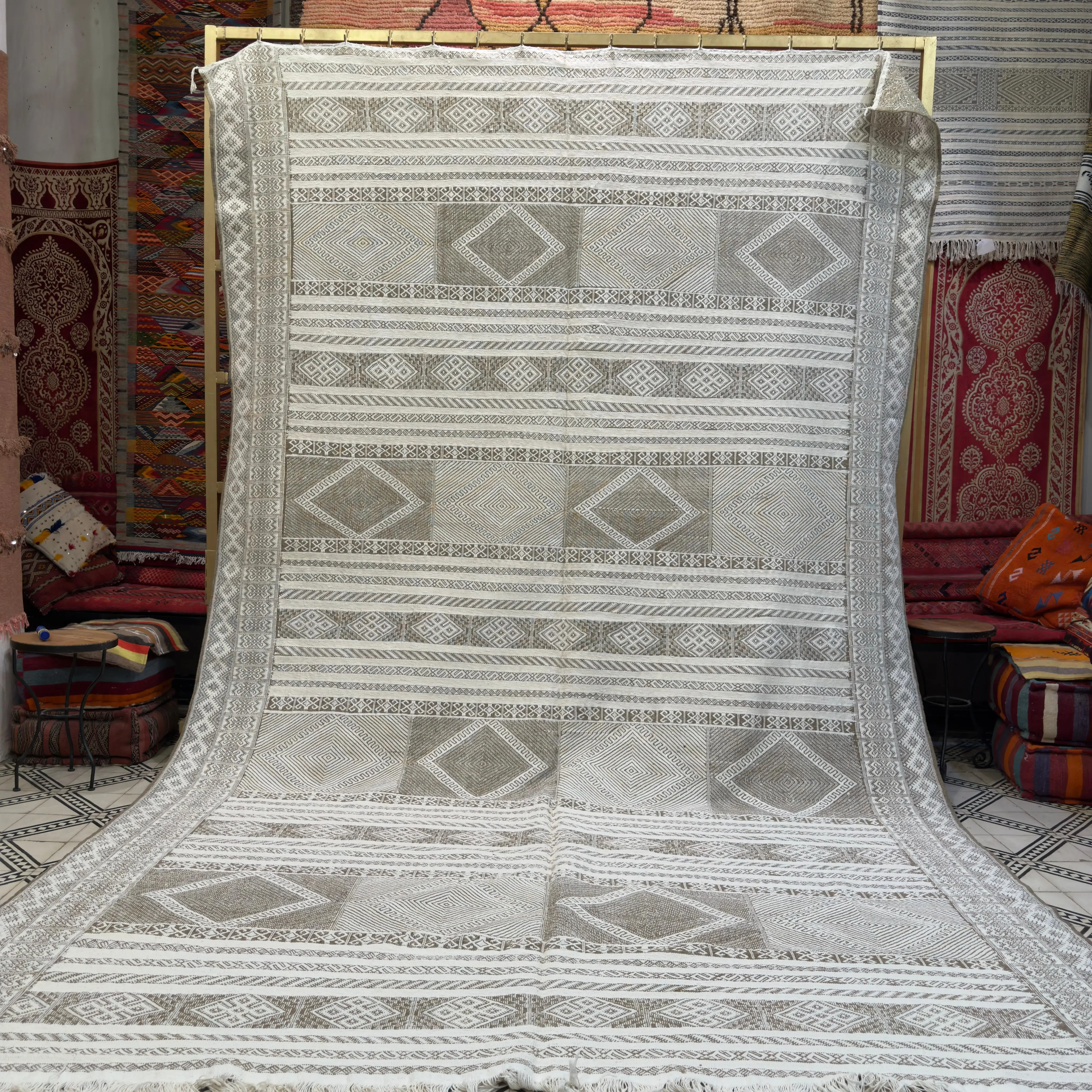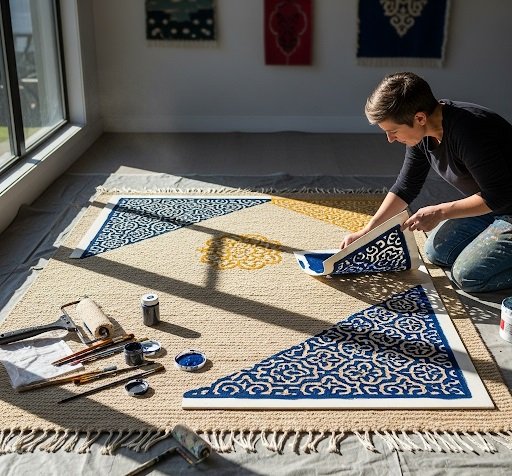
You’ve spent weeks scrolling through online stores and wandering through shops, searching for the one. The perfect area rug. You have a specific color, a particular pattern, and a precise size in mind, but it seems to exist only in your imagination. This frustrating search is a common design dilemma. But what if the perfect rug isn't something you find, but something you create?
Welcome to the world of painted rugs—a brilliant DIY solution that puts you in the designer's seat. Painting a plain, inexpensive rug is a budget-friendly and surprisingly simple way to get a completely custom, high-end look. This guide will show you how to turn a blank canvas into a work of art for your floor.

The Perfect Canvas: Choosing the Right Rug to Paint
Before you can unleash your inner artist, you need the right canvas. The success of this project hinges on starting with the right type of rug.
-
Low Pile is Non-Negotiable: This is the most important rule. A flatweave or very low-pile rug is essential. Paint will not adhere properly to a high-pile or shag rug, and the result will be a crunchy, matted mess.
-
Natural Fibers Work Best: Rugs made from natural fibers like cotton, jute, or even a tight-weave wool are ideal. They absorb the paint well, allowing it to bond with the fibers rather than just sitting on top.
-
Start with a Light, Solid Color: A plain ivory, beige, or light gray rug will act as a blank canvas, allowing your chosen paint colors to pop.
Gather Your Artistic Arsenal
This project requires a few specific supplies to ensure a durable, professional-looking finish.
-
A Plain, Low-Pile Rug: A simple, inexpensive cotton or jute rug is perfect. This is a great opportunity to use round area rugs to create a unique statement piece for an entryway or under a small table.
-
Paint: You must use either fabric paint or latex wall paint mixed with a fabric/textile medium. This is crucial! Fabric medium keeps the paint flexible after it dries, so your rug won't feel stiff and crack.
-
Painter's Tape: For creating crisp, clean lines for stripes and geometric patterns.
-
Paint Brushes and/or a Small Foam Roller: A combination works well—a roller for large areas and brushes for details.
-
A Drop Cloth or Plastic Sheeting: To protect your floors.
-
Measuring Tape and a Pencil: For planning your design.
Your Step-by-Step Guide to a Painted Masterpiece
Step 1: Prep Your Space and Rug Lay down your drop cloth. Make sure your rug is completely clean and free of dust or debris. If it's new, give it a good vacuum. If it's old, consider having it professionally cleaned first.
Step 2: Plan and Tape Your Design This is where the fun begins. Use your measuring tape and pencil to lightly sketch out your design. For a simple geometric pattern or stripes, use painter's tape to create your lines. Press the edges of the tape down firmly to prevent the paint from bleeding underneath.
Step 3: Mix Your Paint If you're using latex paint, mix it with the fabric medium according to the directions on the bottle (usually a 1:1 or 2:1 ratio). This is the perfect time to create your dream color palette. Have you been searching for the perfect green area rug in a specific shade of sage or olive? Now you can mix it yourself!
Step 4: Get Painting! Apply the paint in thin, even coats. It's better to do two thin coats than one thick, goopy one. Use a dabbing or stippling motion with your brush to work the paint into the rug's weave. A foam roller can speed up the process for larger sections.
Step 5: The Big Reveal and Curing Time Carefully remove the painter's tape while the paint is still slightly damp to get the cleanest lines. Now comes the hardest part: waiting. Let the rug dry completely for at least 24 hours. After it's dry to the touch, it needs to "cure" for the paint to become permanent. Most fabric paints require heat-setting with an iron (place a cloth between the iron and the rug) or simply need to cure for up to 72 hours. Check your paint or medium instructions.
Conclusion: Walk All Over Your Art
Why settle for a mass-produced rug when you can design one that is perfectly, uniquely you? Painting a rug is a rewarding project that allows you to take complete creative control. Whether you're creating a custom-colored green area rug to match your plants or designing a bold pattern for one of your round area rugs, this DIY approach ensures your home's decor is truly one-of-a-kind.
Vous avez passé des semaines à parcourir les boutiques en ligne et à errer dans les magasins, à la recherche de la perle rare. Le tapis parfait. Vous avez une couleur spécifique, un motif particulier et une taille précise en tête, mais il semble n'exister que dans votre imagination. Cette recherche frustrante est un dilemme de design courant. Mais si le tapis parfait n'était pas quelque chose que vous trouviez, mais quelque chose que vous créiez ?
Bienvenue dans le monde des tapis peints — une solution de bricolage brillante qui vous met dans la peau du designer. Peindre un tapis uni et peu coûteux est un moyen économique et étonnamment simple d'obtenir un look entièrement personnalisé et haut de gamme. Ce guide vous montrera comment transformer une toile vierge en une œuvre d'art pour votre sol.

La toile parfaite : Choisir le bon tapis à peindre
Avant de pouvoir libérer l'artiste qui est en vous, vous avez besoin de la bonne toile. Le succès de ce projet dépend du choix du bon type de tapis au départ.
-
Le poil ras est non négociable : C'est la règle la plus importante. Un tapis à tissage plat ou à poils très ras est essentiel. La peinture n'adhérera pas correctement à un tapis à poils longs ou à un tapis shag, et le résultat sera un désastre croquant et emmêlé.
-
Les fibres naturelles fonctionnent le mieux : Les tapis fabriqués à partir de fibres naturelles comme le coton, le jute ou même une laine à tissage serré sont idéaux. Ils absorbent bien la peinture, lui permettant de se lier aux fibres plutôt que de simplement rester en surface.
-
Commencez avec une couleur claire et unie : Un tapis uni ivoire, beige ou gris clair servira de toile vierge, permettant à vos couleurs de peinture choisies de ressortir.
Rassemblez votre arsenal artistique
Ce projet nécessite quelques fournitures spécifiques pour garantir une finition durable et d'aspect professionnel.
-
Un tapis uni à poils ras : Un simple tapis en coton ou en jute peu coûteux est parfait. C'est une excellente occasion d'utiliser des tapis ronds pour créer une pièce maîtresse unique pour une entrée ou sous une petite table.
-
Peinture : Vous devez utiliser soit de la peinture pour tissu, soit de la peinture murale au latex mélangée à un médium pour tissu/textile. C'est crucial ! Le médium pour tissu maintient la peinture flexible après séchage, de sorte que votre tapis ne sera pas rigide et ne se fissurera pas.
-
Ruban de masquage : Pour créer des lignes nettes et propres pour les rayures et les motifs géométriques.
-
Pinceaux et/ou un petit rouleau en mousse : Une combinaison fonctionne bien — un rouleau pour les grandes surfaces et des pinceaux pour les détails.
-
Une bâche de protection ou une feuille de plastique : Pour protéger vos sols.
-
Un mètre ruban et un crayon : Pour planifier votre design.
Votre guide étape par étape pour un chef-d'œuvre peint
Étape 1 : Préparez votre espace et votre tapis Étendez votre bâche de protection. Assurez-vous que votre tapis est complètement propre et exempt de poussière ou de débris. S'il est neuf, passez-lui un bon coup d'aspirateur. S'il est ancien, envisagez de le faire nettoyer par un professionnel au préalable.
Étape 2 : Planifiez et masquez votre design C'est ici que le plaisir commence. Utilisez votre mètre ruban et votre crayon pour esquisser légèrement votre design. Pour un motif géométrique simple ou des rayures, utilisez du ruban de masquage pour créer vos lignes. Appuyez fermement sur les bords du ruban pour empêcher la peinture de baver en dessous.
Étape 3 : Mélangez votre peinture Si vous utilisez de la peinture au latex, mélangez-la avec le médium pour tissu selon les instructions sur la bouteille (généralement un rapport de 1:1 ou 2:1). C'est le moment idéal pour créer la palette de couleurs de vos rêves. Vous cherchiez le parfait tapis vert dans une nuance spécifique de sauge ou d'olive ? Maintenant, vous pouvez le mélanger vous-même !
Étape 4 : Peignez ! Appliquez la peinture en couches fines et régulières. Il vaut mieux faire deux couches fines qu'une seule couche épaisse et pâteuse. Utilisez un mouvement de tamponnement ou de pointillé avec votre pinceau pour faire pénétrer la peinture dans le tissage du tapis. Un rouleau en mousse peut accélérer le processus pour les plus grandes sections.
Étape 5 : La grande révélation et le temps de séchage Retirez délicatement le ruban de masquage pendant que la peinture est encore légèrement humide pour obtenir les lignes les plus nettes. Vient maintenant la partie la plus difficile : l'attente. Laissez le tapis sécher complètement pendant au moins 24 heures. Une fois qu'il est sec au toucher, il doit « durcir » pour que la peinture devienne permanente. La plupart des peintures pour tissu nécessitent un thermofixage avec un fer à repasser (placez un chiffon entre le fer et le tapis) ou ont simplement besoin de durcir jusqu'à 72 heures. Vérifiez les instructions de votre peinture ou de votre médium.
Conclusion : Marchez sur votre œuvre d'art
Pourquoi se contenter d'un tapis produit en série quand vous pouvez en concevoir un qui est parfaitement, uniquement vous ? Peindre un tapis est un projet gratifiant qui vous permet de prendre le contrôle créatif total. Que vous créiez un tapis vert de couleur personnalisée pour correspondre à vos plantes ou que vous conceviez un motif audacieux pour l'un de vos tapis ronds, cette approche de bricolage garantit que la décoration de votre maison est vraiment unique.
Has pasado semanas navegando por tiendas en línea y deambulando por tiendas, en busca de la joya de la corona. La alfombra perfecta. Tienes un color específico, un patrón particular y un tamaño preciso en mente, pero parece que solo existe en tu imaginación. Esta búsqueda frustrante es un dilema de diseño común. Pero, ¿y si la alfombra perfecta no fuera algo que encuentras, sino algo que creas?
Bienvenido al mundo de las alfombras pintadas, una brillante solución de bricolaje que te pone en el asiento del diseñador. Pintar una alfombra lisa y económica es una forma económica y sorprendentemente sencilla de conseguir un aspecto totalmente personalizado y de alta gama. Esta guía te mostrará cómo transformar un lienzo en blanco en una obra de arte para tu suelo.

El lienzo perfecto: Elegir la alfombra adecuada para pintar
Antes de que puedas dar rienda suelta al artista que llevas dentro, necesitas el lienzo adecuado. El éxito de este proyecto depende de empezar con el tipo de alfombra correcto.
-
El pelo corto no es negociable: Esta es la regla más importante. Una alfombra de tejido plano o de pelo muy corto es esencial. La pintura no se adherirá correctamente a una alfombra de pelo largo o tipo "shag", y el resultado será un desastre crujiente y apelmazado.
-
Las fibras naturales funcionan mejor: Las alfombras hechas de fibras naturales como el algodón, el yute o incluso una lana de tejido apretado son ideales. Absorben bien la pintura, permitiendo que se adhiera a las fibras en lugar de simplemente quedarse en la superficie.
-
Empieza con un color claro y liso: Una alfombra lisa de color marfil, beige o gris claro servirá como un lienzo en blanco, permitiendo que los colores de pintura que elijas resalten.
Reúne tu arsenal artístico
Este proyecto requiere algunos suministros específicos para garantizar un acabado duradero y de aspecto profesional.
-
Una alfombra lisa de pelo corto: Una simple y económica alfombra de algodón o yute es perfecta. Esta es una excelente oportunidad para usar alfombras redondas para crear una pieza central única para una entrada o debajo de una mesa pequeña.
-
Pintura: Debes usar pintura para tela o pintura de látex para paredes mezclada con un médium para tela/textil. ¡Esto es crucial! El médium para tela mantiene la pintura flexible después de que se seca, para que tu alfombra no se sienta rígida ni se agriete.
-
Cinta de pintor: Para crear líneas nítidas y limpias para rayas y patrones geométricos.
-
Pinceles y/o un rodillo de espuma pequeño: Una combinación funciona bien: un rodillo para áreas grandes y pinceles para los detalles.
-
Una lona protectora o una lámina de plástico: Para proteger tus suelos.
-
Una cinta métrica y un lápiz: Para planificar tu diseño.
Tu guía paso a paso para una obra maestra pintada
Paso 1: Prepara tu espacio y tu alfombra Extiende tu lona protectora. Asegúrate de que tu alfombra esté completamente limpia y libre de polvo o escombros. Si es nueva, dale una buena aspirada. Si es vieja, considera limpiarla profesionalmente primero.
Paso 2: Planifica y enmascara tu diseño Aquí es donde empieza la diversión. Usa tu cinta métrica y tu lápiz para esbozar ligeramente tu diseño. Para un patrón geométrico simple o rayas, usa cinta de pintor para crear tus líneas. Presiona firmemente los bordes de la cinta para evitar que la pintura se filtre por debajo.
Paso 3: Mezcla tu pintura Si usas pintura de látex, mézclala con el médium para tela según las instrucciones de la botella (generalmente una proporción de 1:1 o 2:1). Este es el momento perfecto para crear la paleta de colores de tus sueños. ¿Buscabas la alfombra verde perfecta en un tono específico de salvia u oliva? ¡Ahora puedes mezclarla tú mismo!
Paso 4: ¡A pintar! Aplica la pintura en capas finas y uniformes. Es mejor dar dos capas finas que una gruesa y pastosa. Usa un movimiento de toques o punteado con tu pincel para que la pintura penetre en el tejido de la alfombra. Un rodillo de espuma puede acelerar el proceso en las secciones más grandes.
Paso 5: La gran revelación y el tiempo de curado Retira con cuidado la cinta de pintor mientras la pintura aún está ligeramente húmeda para obtener las líneas más nítidas. Ahora viene la parte más difícil: esperar. Deja que la alfombra se seque por completo durante al menos 24 horas. Una vez que esté seca al tacto, necesita "curarse" para que la pintura se vuelva permanente. La mayoría de las pinturas para tela requieren un fijado con calor con una plancha (coloca un paño entre la plancha y la alfombra) o simplemente necesitan curarse hasta 72 horas. Consulta las instrucciones de tu pintura o médium.
Conclusión: Camina sobre tu obra de arte
¿Por qué conformarse con una alfombra producida en masa cuando puedes diseñar una que sea perfecta y únicamente tuya? Pintar una alfombra es un proyecto gratificante que te permite tomar el control creativo total. Ya sea que estés creando una alfombra verde de color personalizado para que combine con tus plantas o diseñando un patrón audaz para una de tus alfombras redondas, este enfoque de bricolaje garantiza que la decoración de tu hogar sea verdaderamente única.


